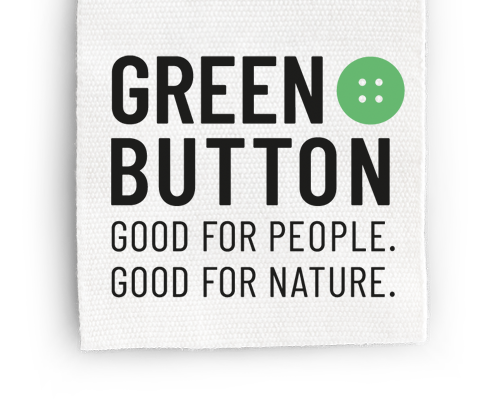Comparison shows: Green Button companies well prepared for the German Supply Chain Act
The German Supply Chain Act (LkSG) has been in force since January 2021. For the first time, companies above a certain size are legally obliged to do what Green Button companies have been doing voluntarily since 2019: demonstrably take responsibility for their supply chains. In order to support companies in complying with the legal regulations, the Green Button Secretariate has drawn up a comparison of the requirements of the LkSG with those of the Green Button. The document shows where requirements overlap and where there are differences.
The good news for all Green Button-licensed companies first: Green Button-licensed companies are already well prepared for the LkSG and in some cases better positioned than the law currently expects. Green Button companies are in a particularly good position with regard to the policy of responsible business conduct or the prevention measures of their direct suppliers.
Many overlaps between the Green Button standard and the law’s requirements
The comparison shows that the law and the Green Button place similar requirements on companies overall and often only differ in details. For example, both the law and the Green Button require the development of a policy on responsible business conduct. However, the requirements for the content of the policy statement are more detailed in the Green Button Standard than in the LkSG.
Even regarding requirements where the content appears to differ at first glance, a closer look reveals that they lead to the same result. For example, the policy on responsible business conduct in the law is regarded as a preventive measure and is closely linked to the risk analysis. In the Green Button, the policy is the cornerstone of responsible corporate governance and is not seen as a preventive measure. However, this does not change the implementation, as a policy statement with relevant content must be available in both cases.
Furthermore, although some requirements of the law are not a direct part of the Green Button requirements, they are often requested as part of the verification process and/or as part of the surveillance audit. For example, in contrast to the law, the Green Button requirements do not ask about the process in which the management is informed about risk management. However, a process description is part of the verification process in the audit.
Differences mainly regarding risk analysis and grievance procedures
In addition to these overlaps, there are also a few differences. One notable difference is the depth of the risk analysis. Here, the requirements of the Green Button go beyond those of the law. With the Green Button, the risk analysis covers the entire textile supply chain from the outset. This includes all production activities in all sourcing countries right down to the origin of the raw materials. No distinction is made between direct suppliers with a direct contractual relationship and indirect suppliers without a contractual relationship. The derivation and implementation of preventive measures is based on the prioritized risks from the risk analysis. This is a significant difference to the LkSG: there, preventive measures are primarily required of direct suppliers. For suppliers in the deeper supply chain without a direct contractual relationship, corrective measures are only required if there is substantiated knowledge of violations.
In addition, the law and the GK take different approaches with regard to grievance procedures and mechanisms. The Green Button takes an implementation-oriented approach: Companies must address existing grievance mechanisms in the supply chain in their risk analysis and evaluate them in terms of their effectiveness. Sensible measures are then defined on this basis. The law, on the other hand, requires companies to set up their own grievance mechanisms per se and places high demands on the rules of procedure.
You can find the complete comparison of the requirements here.

